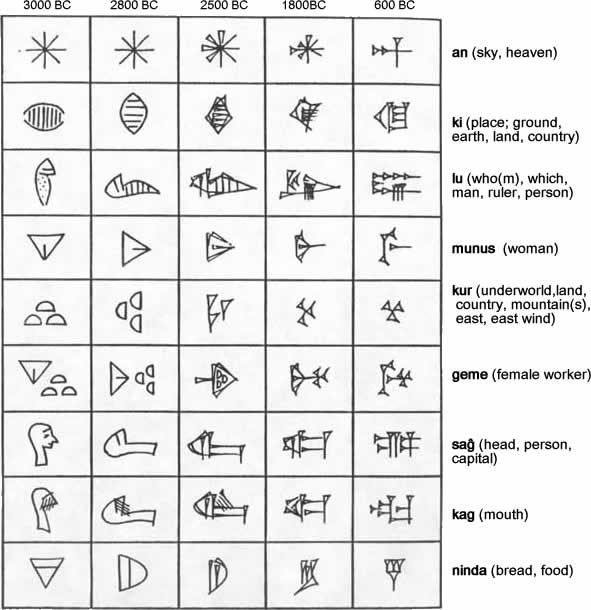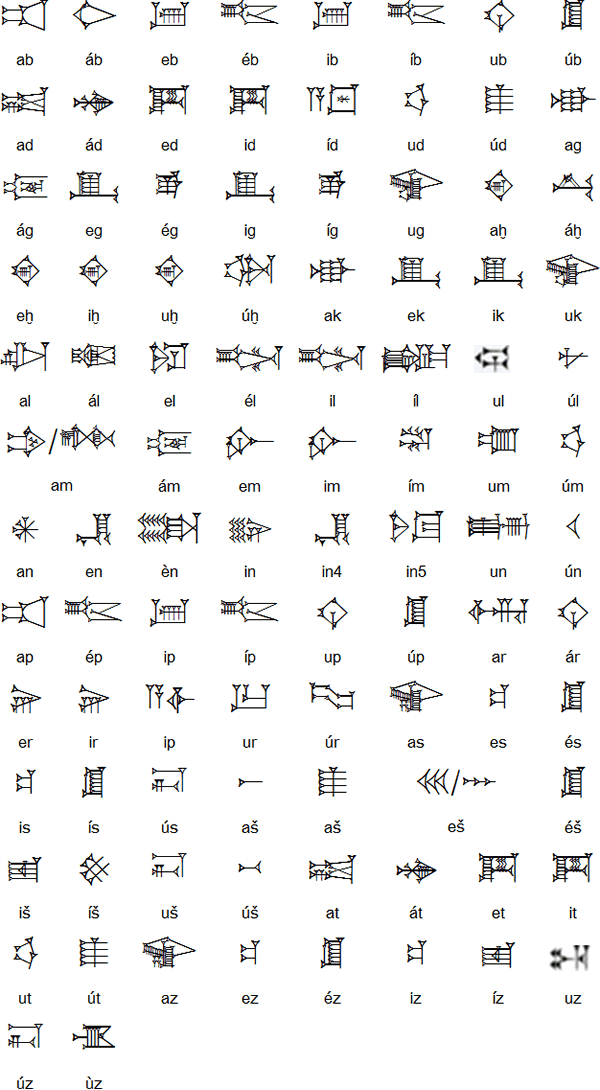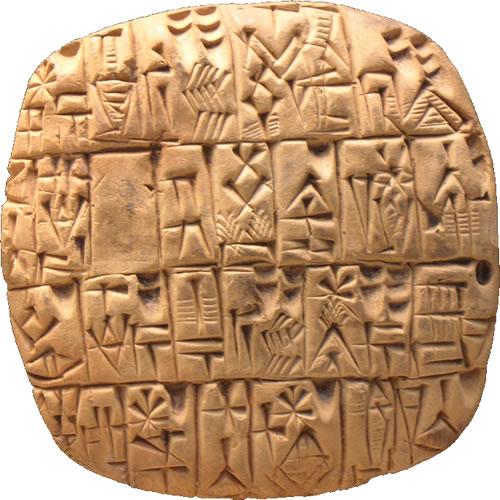Sumerian cuneiform
Sumerian cuneiform is the earliest known writing system. Its origins can be traced back to about 8,000 BC and it developed from the pictographs and other symbols used to represent trade goods and livestock on clay tablets. Originally the Sumerians made small tokens out of clay to represent the items. The tokens were kept together in sealed clay envelopes, and in order to show what was inside the envelopes, they press the tokens into the clay in the outside.
Examples of the clay tokens
The name 'cuneiform' means 'wedge-shaped' and comes from the Latin cuneus (wedge). It is based on the appearance of the strokes, which were made by pressing reed a stylus into clay. These type of symbol emerged in 3,000 BC.
By about 2,800 BC some of the Sumerian glyphs were being used to represent sounds using the rebus principle. For example, the symbol for arrow, pronounced 'ti', was used to represent the word for life (til). There were also many glyphs which were pronounced the same but represented different words. Later a system of determinatives, which gave you a hint at the category a word belonged to, and of phonetic components, which indiciated how to pronounce a word, developed, and helped disambiguate the meanings of glyphs.
Here are some examples of how glyphs changed over time:

Source: http://pandora.cii.wwu.edu/vajda/ling201/writingsystems/sumeriancuneiform.htm
Notable features
- Type of writing system: semanto-phonetic - the symbols consist of phonograms, representing spoken syllables, determinatives, which indicate the category a word belonged to and logograms, which represent words.
- Direction of writing: variable - early texts were written vertically from top to bottom, but by about 3,000 BC the direction had changed to left to right in horizontal rows. At the same time the signs were rotated 90° anticlockwise and started to be made up mainly of wedges.
- Number of symbols: between about 1,000 in older texts to 400 in later texts.
- Many of the symbols had multiple pronunciations.
- Used to write: Sumerian
Sumerian syllabic glyphs


Sample text

Sumerian cuneiform tablet, listing herders and cows in the goddess Inana’s fields, 21st–20th century B.C
Source: http://forces.si.edu/soils/04_00_38.html
Links
Information about the Sumerian language and writing system:http://www.ancientscripts.com/sumerian.html
http://en.wikipedia.org/wiki/Cuneiform_script
http://en.wikipedia.org/wiki/Sumerian_language
http://www.sumerian.org/
Sumerian Lexicon
http://www.sumerian.org/sumerlex.htm
The Sumerian Word of the Day
http://sumerianwotd.livejournal.com/









.jpg)
.jpg)

.jpg)





0 comments:
Post a Comment
Note: Only a member of this blog may post a comment.